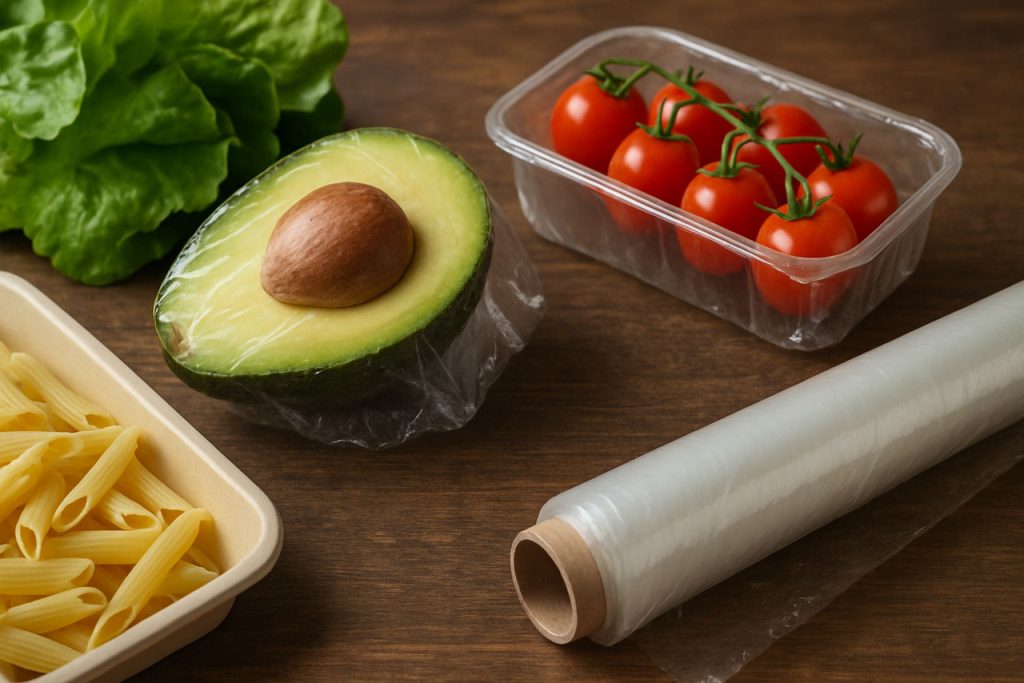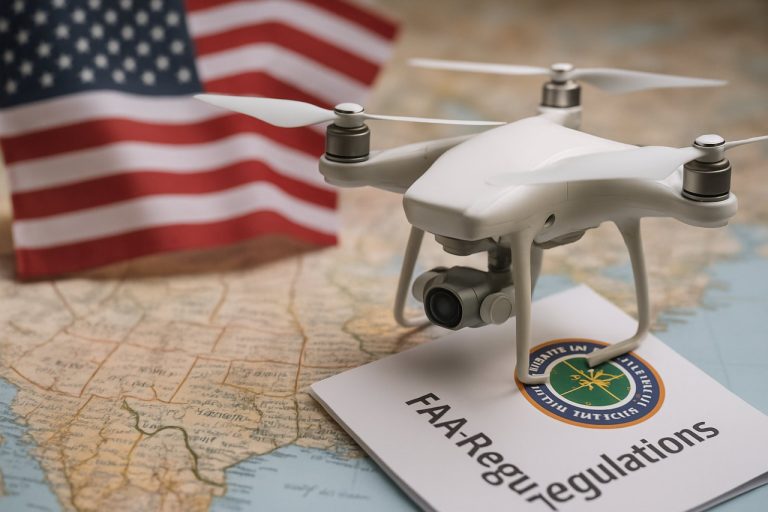
Table of Contents
- Executive Summary: 2025 Market Catalysts
- Key Drivers: Sustainability, Regulations, and Consumer Trends
- Competitive Landscape: Leading Manufacturers and Innovators
- Material Innovations: PLA, Starch Blends, Cellulose, and Beyond
- Performance & Safety: Barrier Properties and Shelf-Life Analysis
- Global Market Forecasts: Revenue, Volume, and Regional Hotspots (2025–2030)
- Supply Chain & Circular Economy: Sourcing, Processing, and End-of-Life
- Adoption Barriers & Regulatory Landscape: Compliance in 2025
- Case Studies: Real-World Applications by Industry Leaders (e.g., natureworksllc.com, tipa-corp.com)
- Future Outlook: Emerging Technologies and Next-Gen Solutions
- Sources & References
Executive Summary: 2025 Market Catalysts
In 2025, the biodegradable food packaging film sector is poised for accelerated growth, driven by regulatory momentum, consumer demand for sustainability, and innovations in biopolymer technology. Major legislative developments are catalyzing industry shifts: the European Union’s single-use plastics directive and new Extended Producer Responsibility (EPR) frameworks are compelling food brands and packaging suppliers to adopt eco-friendly alternatives at scale. Similarly, countries such as Canada and India are implementing or enforcing stricter bans on traditional plastics, further supporting the transition towards biodegradable solutions.
Key industry players are responding with significant investments in research and production capacity. For instance, Corbion has expanded its portfolio of PLA (polylactic acid)-based films for food packaging, focusing on compostable and renewable solutions. NatureWorks LLC continues to scale its Ingeo biopolymer, with its new plant in Thailand slated to come online, boosting global supply and reducing cost barriers. Amcor has announced new lines of high-barrier, biodegradable films targeting both fresh produce and ready meals, reflecting growing brand adoption.
Data from industry bodies underscores the momentum: according to European Bioplastics, global bioplastics production capacity is projected to increase from 2.2 million tonnes in 2024 to over 7 million tonnes by 2028, with packaging—especially flexible films—remaining the largest application segment. Consumer packaged goods leaders such as Nestlé and Unilever are piloting and launching products in compostable films, signaling mainstream acceptance and encouraging suppliers to fast-track commercialization.
Technological advances are also pivotal. Companies are developing multilayer films with performance attributes—such as oxygen and moisture barriers—on par with conventional plastics. Taghleef Industries and TIPA Corp are introducing proprietary blends and coating technologies to extend shelf life and functionality, crucial for food applications. Meanwhile, collaborations between resin producers, converters, and recyclers are emerging to address end-of-life processing and composting infrastructure.
Looking ahead, 2025 will mark a tipping point as cost competitiveness improves, driven by scaling production and regulatory incentives. The interplay between policy, innovation, and corporate commitments is set to solidify biodegradable films as a mainstream solution—transforming food packaging supply chains and unlocking new market opportunities worldwide.
Key Drivers: Sustainability, Regulations, and Consumer Trends
The adoption of biodegradable food packaging films is experiencing rapid acceleration in 2025, driven by a convergence of sustainability initiatives, evolving regulatory frameworks, and shifting consumer preferences. The global food industry is under increasing pressure to reduce plastic waste, as traditional petroleum-based packaging materials have become a focal point for environmental concerns due to their persistence in ecosystems and contribution to landfill accumulation.
Sustainability imperatives have led leading food producers and packaging suppliers to invest in research and scale-up of biodegradable alternatives. Companies such as TIPA Corp. are commercializing fully compostable films that mimic the functionality of conventional plastics while breaking down within industrial composting facilities. Similarly, Amcor has introduced recyclable and compostable film lines to help food brands lower their carbon footprint and meet sustainability targets.
Regulatory drivers are equally pivotal in shaping the market landscape. The European Union continues to enforce its Single-Use Plastics Directive, restricting the use of non-biodegradable packaging in foodservice and retail, and implementing extended producer responsibility (EPR) schemes. In the United States, states such as California are tightening compostability labeling laws, requiring proof that packaging films genuinely biodegrade in real-world conditions. These policy measures are nudging both manufacturers and retailers towards adopting certified biodegradable films. Industry bodies like the Biodegradable Products Institute play a vital role by certifying packaging films that meet stringent compostability standards, further supporting regulatory compliance and market credibility.
Consumer trends are reinforcing these shifts. Surveys by major food brands indicate that over 70% of consumers in 2025 prefer products with environmentally responsible packaging, and are increasingly willing to pay a premium for sustainable solutions. Brands including Nestlé and Unilever have responded by piloting and rolling out biodegradable and compostable packaging for snack foods, ready meals, and produce, in collaboration with film manufacturers.
Looking ahead, the next few years are expected to witness robust growth in the adoption of biodegradable food packaging films, supported by ongoing material innovation—such as films derived from starch, cellulose, and polylactic acid (PLA)—and broader infrastructure investments in composting and recycling. The synergy between regulatory mandates, industry innovation, and consumer demand is set to make biodegradable films an increasingly mainstream choice for food packaging through 2025 and beyond.
Competitive Landscape: Leading Manufacturers and Innovators
The competitive landscape for biodegradable food packaging films in 2025 is marked by rapid innovation and strategic expansion among major manufacturers and emerging technology leaders. As global regulations and consumer demand increasingly favor sustainable packaging, industry frontrunners are leveraging advanced biomaterials, expanding production capacity, and forging new partnerships to maintain and grow their market positions.
Key players such as NatureWorks LLC and Novamont S.p.A. continue to dominate the sector with their established polylactic acid (PLA) and Mater-Bi® film technologies. In 2023-2025, NatureWorks LLC announced the construction of a new fully integrated Ingeo™ PLA plant in Thailand, projected to come online in late 2024 or early 2025, significantly expanding their global supply capabilities and reducing the carbon footprint associated with transportation. Novamont S.p.A. has similarly invested in scaling up production and research to improve film performance and compostability, with new grades of biodegradable films tailored to meet stricter food contact and home composting standards.
European manufacturers such as Taghleef Industries and Amcor have accelerated R&D for next-generation bio-based barrier films. In 2024, Taghleef Industries introduced a portfolio of bio-based and biodegradable films for snacks and fresh produce, focusing on enhanced shelf life and printability. Amcor continues to partner with food brands to replace conventional plastics with recyclable or compostable alternatives, aiming to make all its packaging recyclable, reusable, or compostable by 2025.
Startups and specialized firms are also reshaping the competitive landscape. TIPA Corp has expanded its compostable film solutions into North America and Asia, securing agreements with major retailers for fresh produce and bakery packaging. Flexopack and Futamura Group are recognized for their cellulose-based NatureFlex™ films, which have seen growing adoption in the organic and premium food segments.
Looking ahead, the sector is poised for continued consolidation as established chemical and packaging companies invest in or acquire bio-based technology providers. Strategic collaborations, such as resin supply agreements and joint R&D ventures, are expected to accelerate, driving down costs and opening new applications in ready meals, dairy, and e-commerce. With enforcement of extended producer responsibility (EPR) and single-use plastic bans in key markets, the demand for certified biodegradable films will likely intensify, favoring manufacturers with robust, scalable technologies and strong compliance credentials.
Material Innovations: PLA, Starch Blends, Cellulose, and Beyond
The landscape of biodegradable food packaging films in 2025 is defined by rapid material innovation, with polylactic acid (PLA), starch blends, and cellulose-based films leading the market, while novel biopolymers and hybrid materials are poised to further transform the sector. PLA remains a prominent choice, derived from renewable resources such as corn and sugarcane. Its widespread adoption is evidenced by scaling production capacities and integration into mainstream packaging solutions. For instance, NatureWorks LLC continues to invest in Ingeo™ PLA technology, boasting improved barrier properties and heat resistance, which enhances its suitability for a broader range of food products, including ready-to-eat meals and fresh produce.
Starch-based films, often blended with other biopolymers or plasticizers, have seen considerable improvement in mechanical performance and water resistance. Novamont, with its Mater-Bi® line, has spearheaded advances in starch-polyester blends, making them viable for flexible wraps, bags, and even multilayer packaging. These blends are not only compostable but also demonstrate superior printability, an attribute increasingly demanded by brand owners seeking both sustainability and aesthetics.
Cellulose-based films, particularly those derived from wood pulp, are also gaining traction due to their inherent biodegradability and functional versatility. FKuR Kunststoff GmbH and Mondi Group have introduced cellulose films that combine transparency, strength, and effective moisture barriers, supporting applications from bakery packaging to fruit and vegetable wraps. Innovations in coatings and lamination techniques have further expanded the functional scope of cellulose films, enabling them to replace conventional plastics in more demanding food packaging scenarios.
Looking beyond these core materials, the sector is witnessing the emergence of proteins (such as whey and casein), chitosan, and polyhydroxyalkanoates (PHA) as next-generation film materials. Danimer Scientific has pioneered PHA-based films that are marine biodegradable, addressing end-of-life concerns related to food packaging waste leakage into aquatic environments. Additionally, collaborative industry efforts are underway to develop multilayer and hybrid films that merge the best properties of PLA, cellulose, and emerging biopolymers, targeting performance parity with traditional fossil-based plastics.
The outlook for 2025 and the coming years suggests a strong trajectory of innovation, with companies focusing on customizing material properties for diverse food applications and advancing manufacturing scalability. As regulatory frameworks and consumer expectations continue to favor sustainability, the commercialization of these novel biodegradable films is expected to accelerate, reshaping the food packaging industry’s material paradigm.
Performance & Safety: Barrier Properties and Shelf-Life Analysis
As the transition to sustainable packaging accelerates in 2025, the performance and safety of biodegradable food packaging films are under intense industry scrutiny, especially regarding their barrier properties and impact on shelf-life. Barrier properties—chiefly resistance to moisture, oxygen, and other environmental factors—are critical, as they directly influence food preservation and safety across the supply chain.
Recent launches and advancements by major producers reflect significant progress. For example, Novamont has expanded its MATER-BI range of biodegradable films, reporting oxygen and water vapor transmission rates tailored for fresh produce, bakery, and snack applications. These films are designed to balance biodegradability with the protective qualities necessary to maintain food quality and extend shelf life.
Similarly, Amcor introduced its AmLite Ultra Recyclable and AmLite Bio flexible films, which leverage bio-based materials and improved barrier coatings. According to Amcor, these films can achieve moisture and oxygen barrier properties comparable to conventional plastics in select food segments, thus ensuring safety and regulatory compliance while supporting end-of-life biodegradability.
In 2025, TIPA continues to commercialize its fully compostable packaging films for bakery, produce, and dry food sectors. Their films are certified for home and industrial composting, and TIPA’s data indicate shelf-life performance on par with standard polyethylene for compatible food categories, mitigating concerns about premature spoilage in retail and distribution.
Nonetheless, challenges remain, particularly for high-barrier applications such as meat, dairy, and ready-to-eat meals. Biodegradable films often face difficulties matching the ultra-low oxygen and moisture transmission rates delivered by multi-layer petroleum-based laminates. R&D efforts are ongoing: Mondi Group is working on integrating bio-based coatings and nanocellulose to enhance performance further, aiming for commercial rollout within the next few years.
The outlook for 2025 and beyond suggests incremental improvements will continue, enabling broader adoption of biodegradable packaging in less demanding food segments first. Regulatory and retailer pressure is driving rapid scale-up, but for highly perishable goods, multi-material or hybrid solutions may dominate until single-component biodegradable films with top-tier barrier properties are commercially viable. Ongoing collaboration between material innovators, food producers, and packaging converters will be crucial to ensure food safety and minimize waste as the industry transitions toward more sustainable solutions.
Global Market Forecasts: Revenue, Volume, and Regional Hotspots (2025–2030)
The global market for biodegradable food packaging films is poised for robust growth between 2025 and 2030, propelled by escalating regulatory pressures, shifting consumer preferences, and rapid advances in material science. As of 2025, the market is experiencing heightened momentum due to single-use plastic bans and ambitious sustainability targets set by governments and major food producers worldwide.
In terms of revenue, industry leaders and associations anticipate annual double-digit growth rates throughout the forecast period. Novamont, a pioneer in biodegradable materials, projects continued expansion driven by demand in Europe, where regulations such as the EU Single-Use Plastics Directive are enforcing the shift to compostable and biodegradable solutions. North America and Asia-Pacific are also experiencing a surge in adoption, with food producers and retailers integrating biodegradable films into their packaging portfolios to satisfy consumer and legislative requirements.
Volume-wise, the market is set to surpass several hundred thousand metric tons by 2030. According to NatureWorks LLC, one of the world’s largest suppliers of polylactic acid (PLA) biopolymers, the commissioning of new manufacturing facilities in the US and Thailand will double global capacity for compostable films by 2026, signaling a significant scale-up to meet growing demand. Similarly, FKuR Kunststoff GmbH reports increasing output of customized film grades for fresh produce, bakery, and dairy applications, with a strong focus on meeting performance standards while ensuring biodegradability.
Regionally, Europe remains the epicenter of innovation and consumption, propelled by cohesive legislation and eco-conscious consumers. However, Asia-Pacific is emerging as a fast-growing hotspot, led by developments in China, Japan, and India, where local governments and large food processors are investing in green packaging infrastructure. Taghleef Industries highlights the expansion of its bioplastic film lines in Asia and the Middle East, reflecting the region’s accelerating adoption curve.
Looking ahead, the outlook for 2025–2030 is marked by continued investment in R&D, further cost reductions as scale increases, and broader collaboration between packaging producers and the food industry. As more multinational brands commit to circular economy principles and climate targets, biodegradable food packaging films are set to transition from niche alternatives to mainstream packaging solutions, reshaping supply chains and setting new benchmarks for sustainable food packaging worldwide.
Supply Chain & Circular Economy: Sourcing, Processing, and End-of-Life
In 2025, the supply chain for biodegradable food packaging films is rapidly adapting to global sustainability demands and regulatory shifts. Sourcing of raw materials is increasingly focused on renewable biopolymers such as polylactic acid (PLA), starch blends, and cellulose, with major players like NatureWorks LLC and Novamont S.p.A. expanding biopolymer production capacity. For example, NatureWorks is scaling up its new PLA facility in Thailand, which is designed to leverage locally sourced, sustainably grown feedstock.
Processing advancements are evident, with extrusion and coating technologies optimized for both energy efficiency and film performance. Amcor and TIPA Corp are investing in proprietary film formulation and processing techniques to enhance barrier properties and machinability, essential for maintaining food shelf life and compatibility with existing packaging lines. TIPA, for instance, manufactures certified compostable films that run on standard converting and packing equipment, minimizing disruption to established supply chains.
Circular economy principles are increasingly embedded throughout the value chain. Sourcing strategies prioritize agricultural by-products and waste streams, such as potato or corn residues, to reduce competition with food resources and minimize environmental impact. Companies like FKuR Kunststoff GmbH are emphasizing closed-loop systems by facilitating the collection and composting of used films. Their collaborations with retailers and composting facilities are designed to ensure that packaging waste is diverted from landfill and returned to the soil as nutrient-rich compost.
On the end-of-life front, the focus is on scaling up industrial composting infrastructure and harmonizing standards for biodegradability and compostability. Certification bodies such as European Bioplastics are working with manufacturers to ensure compliance with EN 13432 and ASTM D6400 standards, bolstering consumer and municipal trust in the claimed environmental benefits. In 2025, several EU countries and regions in North America are rolling out expanded organics collection and composting programs, which will directly impact the effective circularity of biodegradable films.
Looking ahead to the next few years, industry leaders are targeting further integration of traceability tools and digital platforms to monitor the sourcing, processing, and end-of-life handling of films. This includes partnerships with logistics companies for efficient collection and with composting operators to validate real-world biodegradation. The outlook is one of cautious optimism—supply chains are maturing, but success hinges on continued collaboration among biopolymer producers, film converters, brand owners, retailers, and waste management organizations.
Adoption Barriers & Regulatory Landscape: Compliance in 2025
The adoption of biodegradable food packaging films continues to accelerate in 2025, yet significant barriers remain, particularly concerning regulatory compliance and standardization. As governments and industry bodies worldwide intensify efforts to reduce plastic waste, new mandates and guidelines are shaping the market’s direction. The European Union’s Single-Use Plastics Directive, which took effect in recent years, is being supplemented in 2025 by stricter eco-labeling requirements and extended producer responsibilities for packaging waste. This compels manufacturers of biodegradable films to demonstrate not only compostability but also verifiable environmental benefits throughout the lifecycle of their products (European Commission).
In the United States, the Food and Drug Administration (FDA) maintains rigorous standards regarding materials that come into contact with food, with a renewed focus in 2025 on migration testing and allergenicity of biopolymer additives. Biodegradable film producers seeking FDA approval face lengthy review processes, as the agency requires robust data on safety and degradation byproducts (U.S. Food and Drug Administration). Additionally, the Biodegradable Products Institute (BPI) continues to update certification protocols for compostable packaging, with new emphasis on disintegration rates in industrial and home composting environments (Biodegradable Products Institute).
Industry leaders such as NatureWorks LLC and TIPA Corp report that harmonizing certification standards across regions remains a challenge, as definitions of “biodegradable” or “compostable” still vary. For example, the ASTM D6400 and EN 13432 standards are not always mutually recognized, complicating international distribution. In 2025, organizations such as European Bioplastics are actively collaborating with standards bodies to streamline criteria and support cross-border trade.
Despite regulatory complexity, several countries are launching incentives for adoption, such as reduced taxes or fast-track certification for films made from renewable resources. However, smaller manufacturers face high compliance costs due to frequent testing, certification renewal, and traceability requirements. The outlook for the next few years suggests ongoing consolidation in the sector, as companies with established compliance infrastructure are better positioned to navigate evolving global standards and benefit from expanding market access. As regulatory frameworks mature, transparent labeling and third-party certification are expected to become prerequisites for market entry, driving further investment in research and compliance systems.
Case Studies: Real-World Applications by Industry Leaders (e.g., natureworksllc.com, tipa-corp.com)
Biodegradable food packaging films are gaining significant traction as food and beverage companies respond to consumer demand for sustainable packaging and increasingly stringent regulations. In 2025, several industry leaders are not only scaling up production but also deploying these films in real-world applications across diverse geographies and product categories.
One notable example is NatureWorks LLC, which produces Ingeo™ polylactic acid (PLA) biopolymer, a widely adopted material for biodegradable films. In 2024 and into 2025, NatureWorks has expanded its global network of partners, enabling the launch of new applications such as transparent wraps for fresh produce and bakery items. The company’s collaboration with food brands in the EU and Asia showcases the scalability of PLA films, which are certified compostable according to both EN 13432 and ASTM D6400 standards. In addition, NatureWorks is investing in new manufacturing capacity in Thailand, slated to begin production in 2025, which is expected to significantly increase the availability of biobased packaging films worldwide.
Another industry pioneer, TIPA Corp, is recognized for its fully compostable flexible packaging solutions, closely mimicking the functionality of conventional plastics. TIPA’s films have been adopted by major fresh produce suppliers and organic snack brands in the United States, United Kingdom, and Australia. In 2025, TIPA continues to partner with supermarket chains—such as UK’s Waitrose—to provide compostable bags and packaging for fruits, vegetables, and bakery products, demonstrating successful integration into mainstream retail supply chains. The company reports that its films are compatible with conventional food packaging machinery, further easing their adoption at scale.
Further illustrating market momentum, Amcor, a global packaging leader, has expanded its AmLite Ultra Recyclable and AmLite Bio packaging lines, incorporating bio-based and biodegradable film structures. In 2025, Amcor’s solutions are being utilized by international dairy, snack, and coffee brands, highlighting the versatility and barrier properties of new-generation biodegradable films. Amcor’s commitment includes investment in R&D partnerships to improve home and industrial compostability, as well as recyclability, of their packaging solutions.
Looking ahead, as large brands and retailers increasingly commit to sustainability goals for 2025 and beyond, the commercial deployment of biodegradable food packaging films is expected to accelerate further. Industry leaders are focusing on overcoming cost barriers, scaling up supply, and ensuring robust end-of-life solutions—such as composting infrastructure—to close the loop and realize the full environmental benefits of these innovations.
Future Outlook: Emerging Technologies and Next-Gen Solutions
The landscape for biodegradable food packaging films is poised for significant transformation in 2025 and the subsequent years, driven by technological advances, regulatory pressures, and heightened consumer demand for sustainable alternatives to conventional plastics. Key industry players and research-driven organizations are accelerating innovation to enhance performance, scalability, and commercial viability of next-generation biodegradable films.
One prominent area of development is the refinement of biopolymer formulations. Companies such as Novamont continue to optimize starch-based and polybutylene succinate (PBS) films, targeting improved mechanical strength and barrier properties to match or surpass those of traditional plastic films. In 2025, Novamont is expected to expand its Mater-Bi portfolio, addressing both compostability and food safety requirements for diverse packaging applications.
Another emerging technology is the use of nanomaterials and active packaging solutions. TIPA is advancing fully compostable films with enhanced shelf-life properties by incorporating natural additives that inhibit microbial growth and control moisture transmission. Their ongoing collaborations with food brands in Europe and North America signal broader market adoption in the near term.
Scalability remains a central challenge for biodegradable films. NatureWorks is addressing this by ramping up production of Ingeo biopolymer (PLA) at its new Thailand facility, slated for operational launch in 2025. This strategic expansion aims to meet growing global demand and reduce costs through economies of scale, potentially making biodegradable films more accessible to mainstream food manufacturers.
Additionally, material recovery infrastructure is evolving to support the end-of-life management of these films. BASF is piloting industrial composting partnerships across Europe to streamline the collection and processing of compostable packaging, laying the groundwork for circular material flows and stricter compliance with upcoming EU single-use packaging regulations.
Looking forward, the integration of digital tracing and smart labeling is expected to enhance transparency and promote consumer engagement with biodegradable packaging. Several packaging film producers are partnering with technology providers to pilot QR code-enabled traceability systems, simplifying composting instructions and authenticating material claims.
In summary, the future of biodegradable food packaging films in 2025 and beyond will be marked by improved material performance, larger-scale production, and greater alignment with circular economy models. The continued commitment of industry leaders and strategic investments in innovation and infrastructure will be pivotal in driving widespread adoption and achieving global sustainability targets.



